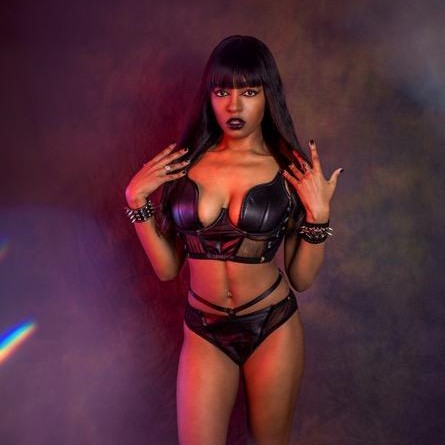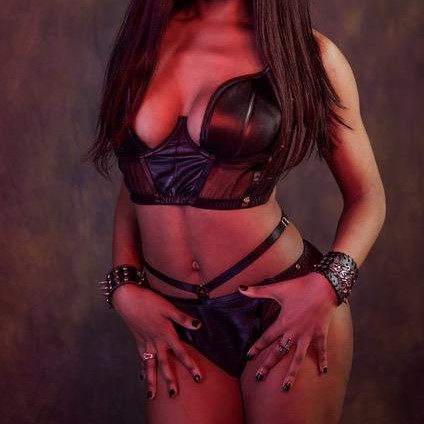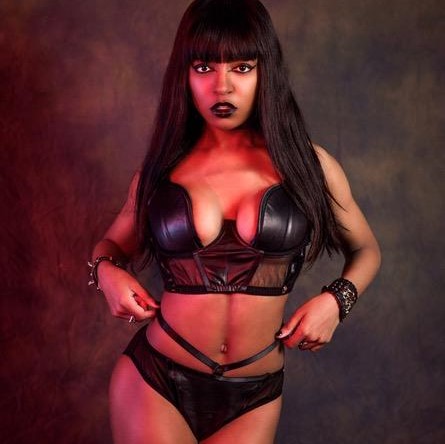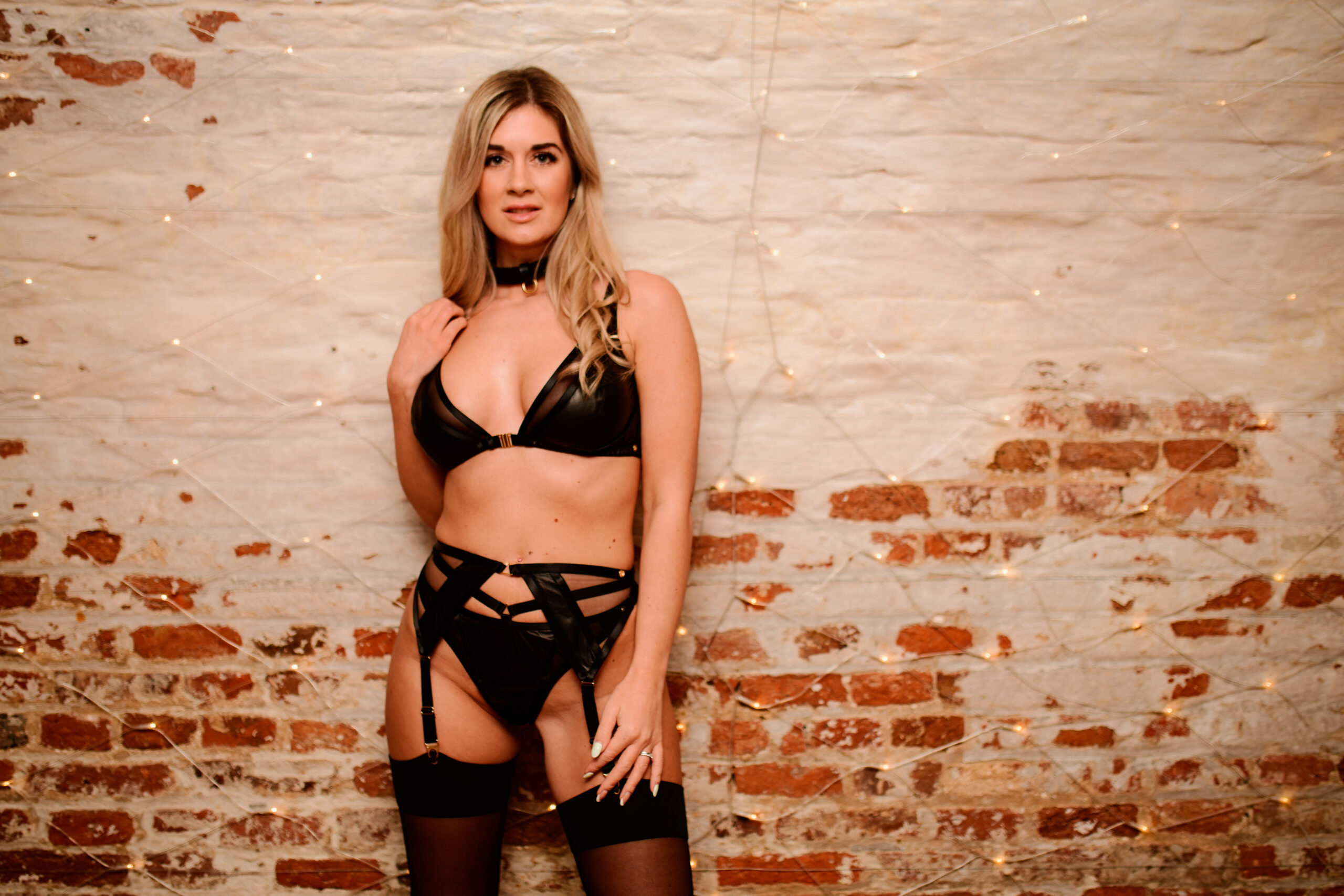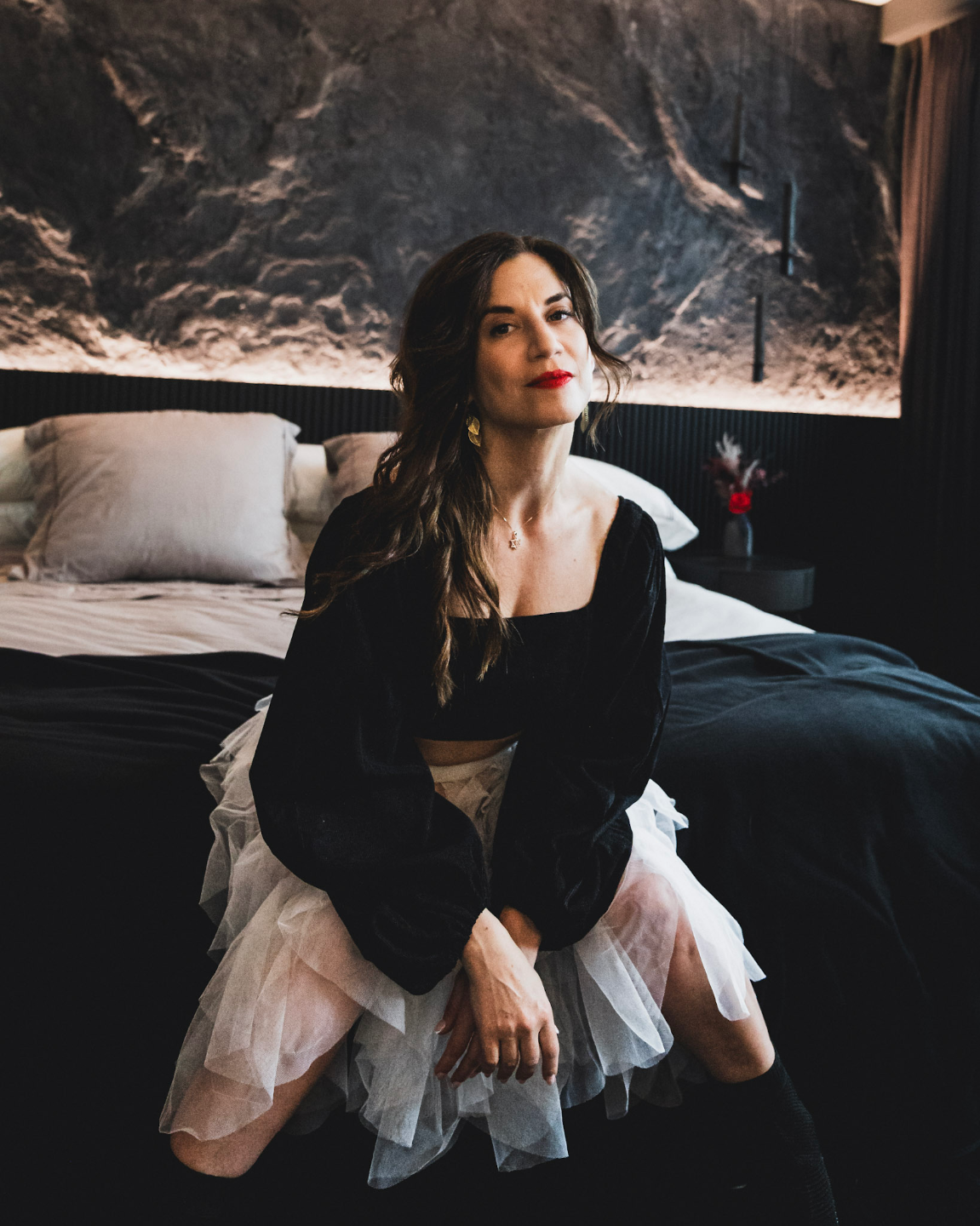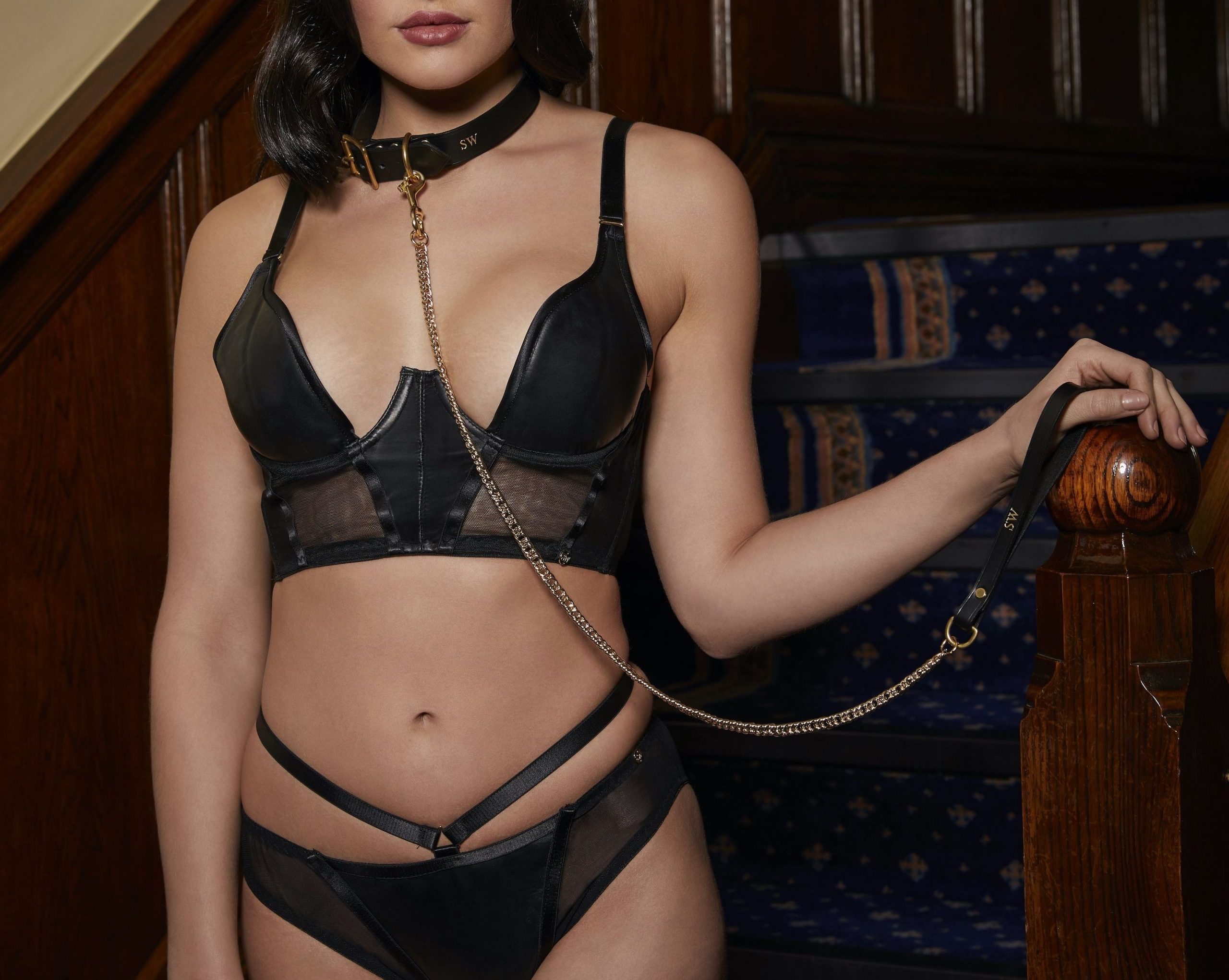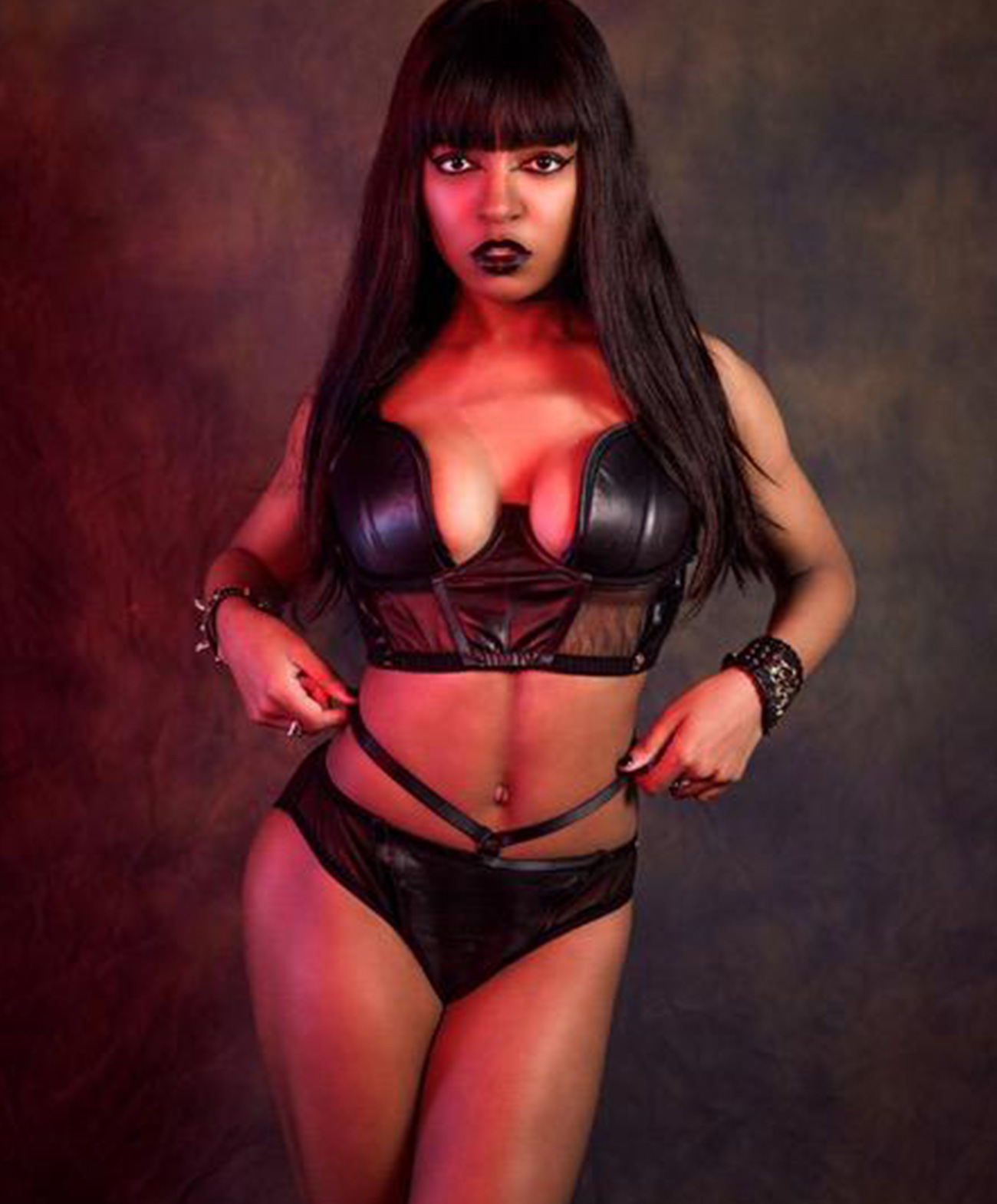
Wickedly Inspirational Women: Yasmin Benoit – Asexual activist
Lingerie Model & Asexuality Activist
Sexuality can be a confusing road to navigate. For some people it’s an easy journey to figure out who or what you like. For others, it may involve a few stop signs, temporary traffic lights, u-turns, roundabouts and diversions before you truly discover your destination when it comes to sexuality.
The history of sexuality is long and vast. Up until the 19th century, differences in sexual orientation were not recognised. While there was knowledge of homosexual behaviour, it wasn’t acknowledged as a sexuality, but more so condemned as sodomy or gross indecency, more often than not resulting in criminal conviction. The term homosexuality was coined in the 19th century, to recognise a man being sexually attracted to another man (lesbianism or female-to-female sexual attraction wasn’t included in homosexuality, as society couldn’t fathom women being sexually attracted to one another, that’s a whole other story…).
The term heterosexuality followed, to give a word to what had been socially accepted as ‘the norm’ throughout history. Prior to this, there were people who believed that homosexuality was actually a third sex, in addition to male and female – “In 1862 the German jurist Karl Heinrich Ulrichs proclaimed the existence of a third sex: “anima muliebris virile corpore inclusa.” Men who desired other men did so because they harboured a female soul in a male body.” (for more on this bizarre belief, see ‘Third Sex, Third Gender: Beyond Sexual Dimorphism in Culture and History’ by Gilbert Herdt). While it seems crazy to us in modern society, there was time where society couldn’t understand people being attracted to anyone other than the opposite sex.
It’s been a long journey to get to where we are today. Today, there are over 20 recognised sexualities today, however that’s not a definitive list. As MGB Relationships highlight, “There’s no definitive number of sexualities since new words are constantly being conceived and integrated into popular language as the way we talk about sexual orientation evolves. This isn’t to say that new types of sexuality are being “invented” out of the blue; rather, people are creating new language to describe nuances of sexual attraction and behavior that have always existed.
These terms serve as a way for people to feel seen and find communities of like-minded people. They also help with describing one’s identity, communicating with others about what you look for in relationships, and establishing compatibility with potential partners.” We’ve seen progressions, although now outdated, such as the Kinsey Scale; created by Alfred Kinsey and first published in 1948. Also known as the Heterosexual-Homosexual Rating Scale, the Kinsey Scale was one of the earliest models to acknowledge that sexuality isn’t a black and white binary where people fall into one of two camps, but rather sexuality is far more fluid than that.
While ground breaking at the time, in modern society, the Kinsey scale has vast limitations. It assumes that gender is binary, it reduces sexuality down to being hetero, homo or bisexual. Yes, it allows freedom for individuals whose sexuality falls somewhere along that scale, but what if you don’t? What if you don’t experience sexual attraction to anyone? What if you’re asexual?
Asexuality means typically experiencing little-to-no sexual attraction to anyone of any gender. Similar to anyone else on the fluid scale of sexuality, not all asexual people are the same. Some may feel a low sense of sexual desire, some may feel none at all. However, that’s not to say you can’t enjoy fulfilling, satisfying relationships at all; perhaps they’re romantic, platonic, full of companionship. Asexuality isn’t the same as celibacy, or abstinence, which are choices to refrain from sex. Those who identify as asexual simply don’t have the physical, innate desire to engage in sexual relationships that others tend to have. It’s not a fear of sex, the result of trauma or any kind of medical condition, it’s simply another word to describe a sexual inclination, or here lack of. Similar to asexuality, there’s also aromantics; those who identify as aromantic don’t have the desire to have romantic relationships with people. It doesn’t mean they’re not capable of love, or that they’re cold or desensitised from emotion, if anything their non-romantic relationships with others, and their relationship with themselves are blossoming.
This Wickedly Inspirational Woman identifies as both.
Our latest Wickedly Inspirational Woman is Yasmin Benoit; an asexual and aromantic activist, alongside model, writer and speaker. Most recently featured on Vogue, (and previously Cosmopolitan, Bricks, Paper, The Times, and various other international media platforms), Yasmin has become a leading face for promoting and developing the conversation around asexuality. And the unlikely face at that…
As a black, gothic, lingerie model, Yasmin stands out in a line-up of asexual activists that have spoken up before her. Most typically white, with a very “next-door” look, Yasmin’s scantily-clad intervention into asexual activism provided a refreshing new take, regularly using the hashtag #ThisIsWhatAsexualLooksLike. Unapologetically ‘ace’ and ‘aro’ (abbreviations for asexual and aromantic), Yasmin is not shy to take down the trolls on Twitter who dish aphobic drivel; with comments deeming her and her aro-ism (specifically in response to her video for Stonewall as an aromantic ally) “narcissism with a touch of sociopathy”, “the epitome of excess privilege” and “psycho, inhuman and emotionally barren”. While acknowledging that it’s far from the first time she’s received comments like this, she highlights that its because of comments like this that her work is so necessary.
Some people ask how its possible for her to be a lingerie model, and yet not partake in the sexualisation that comes with the lingerie industry. As stated in her Vogue article, “a romantic partner won’t complete me, because I was born complete. Feeling sexual attraction to others won’t liberate me because my liberation is not dependent on other people”.
As a lingerie brand, while we often see people purchasing lingerie to seduce a lover, we also see a lot of people purchasing lingerie purely for the means of seducing themselves. To make themselves feel incredible. While you may not feel romantic or sexual connections with others, it doesn’t mean you can’t feel sexy for yourself. While lingerie is often associated with sex, we also associate it with empowerment, liberation, strength and, as Yasmin says herself, ‘badassery’. But you don’t need us to tell you that, keep reading to hear what Yasmin has to say for herself…
Q: Tell us a bit about yourself; your name, age, where you live?
A: My name’s Yasmin Benoit, I’m 24 and I’m from Berkshire in the UK.
Q: What do you do?
A: I’m a model, writer, speaker, and aromantic-asexuality activist.
Q: Can you tell us 5 words to describe yourself?
A: Weird, unapologetic, goofy, nerdy, honest.
Q: How do you feel when you wear lingerie as opposed to underwear?
A: I feel like lingerie is the closest thing a normal person can get to a super hero outfit. Whenever you see people in lingerie, they’re owning it. It isn’t the kind of thing you can wear timidly. I associate it with confidence, power and badassery. That’s potentially because I grew up playing a lot of video games and watching wrestling, where the coolest women were in something akin to lingerie.
Q: What is currently your favourite piece of lingerie that you own and why?
A: I have a lot of beautiful pieces, but I’m particularly into leathery pieces and some with lace, like the Something Wicked look I got recently. It reminds me of X-Men (the movies rather than the comics, I don’t wear yellow), and who didn’t want to be in the X-Men?
Q: What does female empowerment mean to you?
A: Female empowerment means not letting internalised misogyny and patriarchal constructs get the better of you or the way you treat other women. It means lifting yourself up and other women.
Q: What do you do to make yourself empowered/liberated/confident?
A: I feel confident when I’m looking good. Even in lockdown, I try to dress up every now and then, just to feel more like my pre-pandemic self, otherwise I feel like I’m becoming this insular hermit creature. I also feel empowered when I know that I’m doing something constructive and making a difference, so I try not to procrastinate too much and do something productive and social, particularly with my activism.
Q: ‘Female sexuality is no longer a taboo’ Do you agree with this statement?
A: I think it’s becoming increasingly less taboo but there’s a long way to go! I also think that one of the reasons why its becoming less taboo is because it’s being monetised, commercialised and exploited more, in many instances, for the male gaze, which isn’t necessarily a progressive thing.
Q: What message would you give to your younger self eg as a teenager?
A: Stay weird, everything people will on you for will become what you’re known for. It’ll work out in the end.
Explore Yasmin’s writing, modelling and activism work further at her website, and follow her on social media at @theyasminbenoit.


